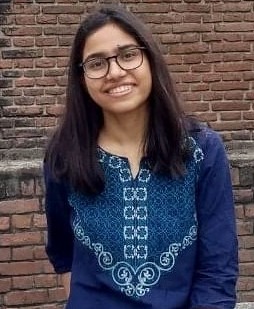Rose Jalal
The term ‘child labour’ combines two words in itself: child” and “labour” which have different meanings that vary across contexts. In 1980, International Labour Organisation made the distinction between “child labour” and “child work”. ‘Child labour’ is a form of work that includes work that is exploitative and harmful to children, which especially takes place “outside the family” “for others” and is recognised as “productive”. ‘Child work’ where children do domestic chores and care for family members is considered not harmful and is recognised as “reproductive” in nature.
To understand child labour in India, it is important to understand the complexities of the caste system that is the foundation of all socio-cultural evils. The link between caste and occupation has contributed to the mushrooming of child labour in India. Caste discrimination is one of the main reasons for child labour as a large chunk of labouring children belong to the scheduled castes. In India, the Hindu caste system is one of the main factors influencing the structuring of the roles that are undertaken by the children (Boyden and Morrow, 2015). Sociologists have defined the caste system as a form of social stratification where each member is ranked according to their birth which determines their occupation, marriage, and social relations with others. All these are based on the religio-cultural notions of purity and pollution. The Hindu caste system is divided into four categories such as Brahmins, Kshatriyas, Vaishyas, and the Shudras. The fifth group is known as the untouchables. They are excluded from the four-fold varna system and are considered impure.
The French sociologist Pierre Bourdieu in his book Outline of a theory of Practice (1977) describes how cultural and social capital play an equally important role in determining one’s future. Socio-cultural aspects are one of the main factors behind child labour in India. Another French Sociologist Louis Dumont in his book Homo Hierarchicus (1966) says that the Hindu caste system is based on the notion of purity and pollution. The “impure status” of Dalits was related to hereditary occupations such as working with leather, disposing of dead animals, manual scavenging, or other such work. The ingrained notions of impurity and untouchability continue to be the cause of extreme poverty, illiteracy, unemployment, and lack of opportunities for Dalit families.
For example, even if a Dalit tries to open a shop, upper caste customers do not buy any of his wares because they consider Dalits impure. They taunt them and pass comments on their caste, behaviour, etc. Due to extreme poverty and discrimination, Dalit families unable to meet their everyday requirements of nourishment are forced to send their children into child labour for some money. Dalit children are working as ragpickers, barbers, cobblers, in manual scavenging, and construction. As long as ingrained discrimination and stigma continue to be the cause of child labour, Dalit children are driven into a vicious cycle of deprivation of their childhood, education, and growth opportunities. Dalit children are underpaid. However, Dalit children are given more work to do and due to long hours of work, they suffer from lack of sleep, hunger, malnutrition, ill health because of unhygienic living conditions, and illiteracy.
However, a large section of children from scheduled castes and scheduled tribes are child labourers. It is not surprising to know that more children from so-called upper caste groups are chosen to labour at parties and weddings because of the concept of “purity” ingrained in the caste system. It is also clear that more children from upper castes or other groups constitute the child non-workers. It means more children from the so-called upper castes are attending school whereas more children from the scheduled castes/tribes are working. Why do Dalits children not attend school? ManyDalit children do not attend schools due to the extreme discrimination they face from teachers and classmates. In school, teachers and fellow students taunt them based on their caste, colour, and behaviour. According to the Right to Education Act that every child below 14 years of age should be in school but still, large numbers of of Dalit and Adivasi children stay away from education.
Louis Pierre Althusser was a French Marxist philosopher who argued that structures influence individuals and their acts. Althusser says that individual acts are not carried out as the result of free will or agency but are always and already dependent upon larger social structures. In the Indian context, we find that it is the caste system, which is basically a social structure, that influences individuals. Therefore, if we see child labour it is caused more by social than economic factors. If we look at the statistics, we find that a major chunk of the child labourers come from the marginalized sections of society such as Dalits and Adivasis. The caste system is an iron cage that has imprisoned Dalit children leaving them with little agency, not letting them act according to their will. Due to this structure, Dalit children are deprived of social, cultural, and economic capital and thus, they are forced into child labour in the shops, market complexes, factories, and various other unorganised workplaces. They cannot escape from this iron cage-like structure because they are born into that structure. So, they are kind of trapped in this structure. Even after the introduction of many schemes and laws the social evil of child labour does not change and the reason behind this is a matter of research.
~
Rose Jalal has an M.A in Sociology from Jawaharlal Nehru University, Delhi.










